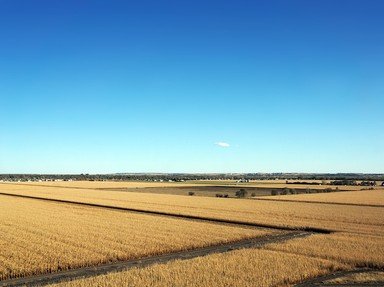Quiz Answer Key and Fun Facts
1. The trip started in Gretna, where I hooked up with my buddy Mike and his young son, whose name has been suppressed to spare him the embarrassment of what ended up happening as these merry knights of the road set off to find "The Good Life". (Warning: it involved car art.)
The first stop of the 2007 road trip was at the Stuhr Museum in Hall County. This facility boasts a fine permanent collection, both of artifacts of pioneer life and Native American culture. Along with a replica of a typical 1897 railroad town and a Pawnee earth lodge, this museum also includes several tributes to a well-known actor from the area, Mr. Henry Fonda. What city is home to the Stuhr Museum?
2. After picking up another youngster in Gothenburg (whose identity will also be kept private - trust me, he doesn't want his good name associated with this debacle, either), we headed to North Platte's Cody Go-Karts, featuring a substantial figure-8 track, bumper boats, mini golf, a scenic waterslide, and a shorter slick-track course where I, having passed on riding, could have a good belly laugh at my companions spinning wildly out of control. For what towering figure of the American West are Cody Go-Carts named?
3. After this strenuous first day, we wanderers rested to feast at one of the region's best-known theme restaurants, Ole's Big Game Bar and Grill in Paxton. This exemplary Western Nebraska steakhouse is famous for the many stuffed specimens its original owner, an avid hunter, brought back from his travels. Which of the following is not mounted as a trophy at Ole's?
4. Our last stop of the waning day was Front Street, a commercial attraction in Nebraska's self-proclaimed "Cowboy Capital" featuring a full-on shootout, a frontier-themed musical, and a pair of museums dedicated to the Old West, Native American culture, and fun things to do with petrified wood. (I am NOT making this up, folks.) What Keith County Seat is home to Front Street?
5. The morning of our second day saw our band of brothers venture west anew, this time in search of Nebraska's best known natural formation, a geologic guide for Antebellum settlers traveling the Oregon, California, and Mormon trails. What is the name of this striking landmark, now featured on the back of Nebraska's Statehood Quarter?
6. I will confess that we had originally planned to turn back east after our last attraction; however, the Boy Scout in the group made an utterly compelling argument for us to visit Scotts Bluff, a national park just south of the city bearing a similar name. I'll have to admit, he made the right call, as the hike from the top of the formation to the ground ended up being a highlight of the trip. I will be honest, though - we weren't exactly orienteering. Scotts Bluff is easily navigable by means of roads and eminently safe trails constructed by relief workers during the Great Depression. In fact, the road to the top of Scotts Bluff is the oldest road in continuous use in all Nebraska.
7. After Scotts Bluff, the trip got a little weird - but that's what we were there for. We ventured north to Alliance, Nebraska, home of a singularly modern tribute to a singularly ancient monument. What venerable site that has survived millennia on Britain's Salisbury Plain can claim an homage in Box Butte County, Nebraska?
8. Having seen some of the most impressive sights of the region, we now set our faces back east for our homes. This, of course, was all part of the plan - the route home included a drive through an area named by Patricia Schultz as one of the "1,000 Places (in the USA and Canada) To See Before You Die" in the book of the same name. What is the name of this vast landscape whose unique terrain remains an elegy to the effects of the last Ice Age?
9. After dropping our token Boy Scout off in Gothenburg (great young man, he was), the three remaining road trippers got in a game of golf before proceeding to "The Great Platte River Road Archway Monument", a museum stretching over Interstate 80 near Kearney. Though viewed by many locals as something of a financial boondoggle (it cost $69 million to build), the Arch, as it is affectionately called, is not without its charms. Which of these uses of the Platte Valley is NOT extensively memorialized by the Arch?
10. The last visit before heading home is Fort Kearny, a State Historical Park dedicated to the last stable outpost of eastern commerce and security that most Oregon Trail emigrants would see before heading west.
Though seeing only a little military use in the twentieth century, this site is a remarkable work of historic preservation where visitors can see the original blockhouses, gun turrets, and extensive fortifications maintained continuously in their original condition.
Source: Author
stuthehistoryguy
This quiz was reviewed by FunTrivia editor
minch before going online.
Any errors found in FunTrivia content are routinely corrected through our feedback system.

